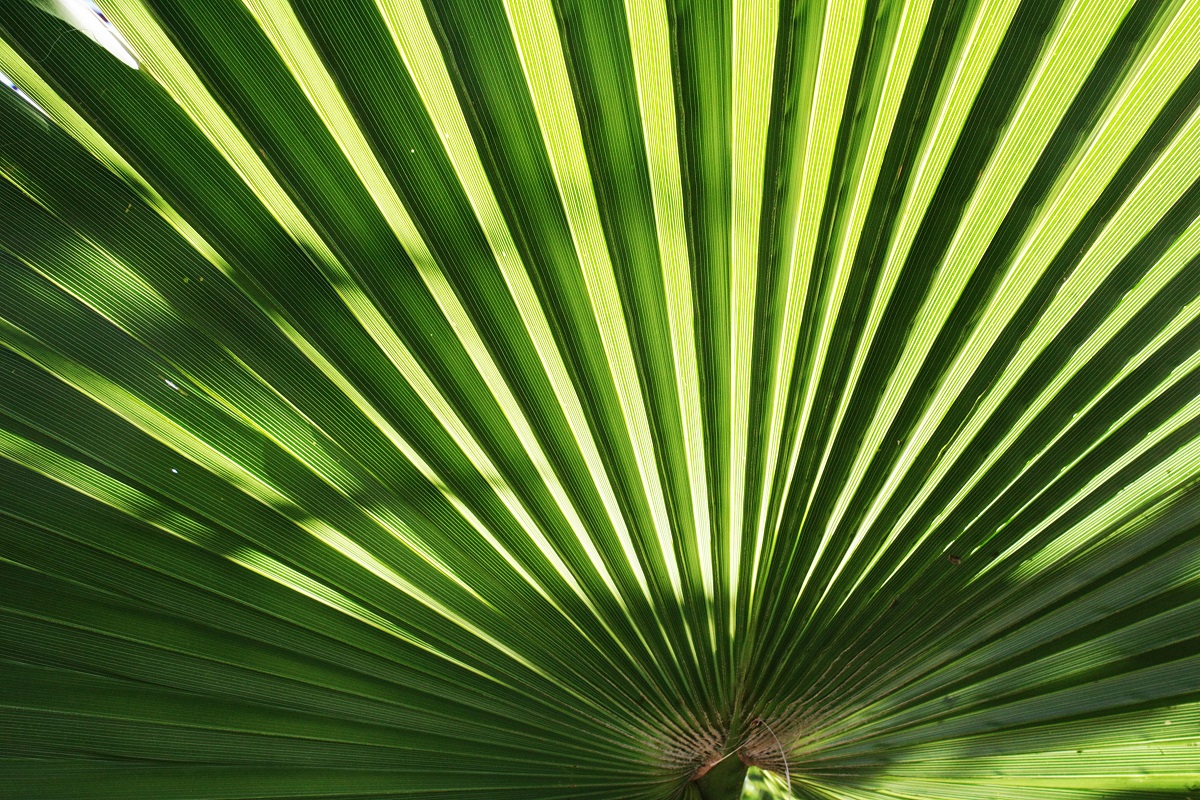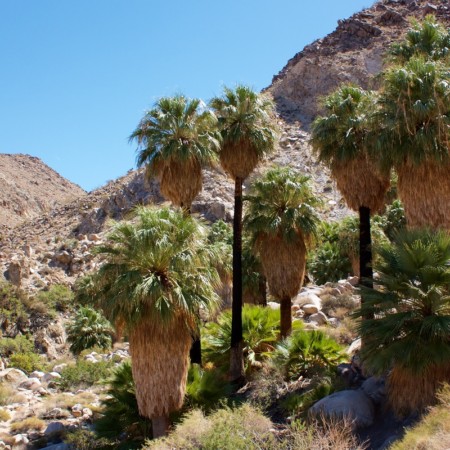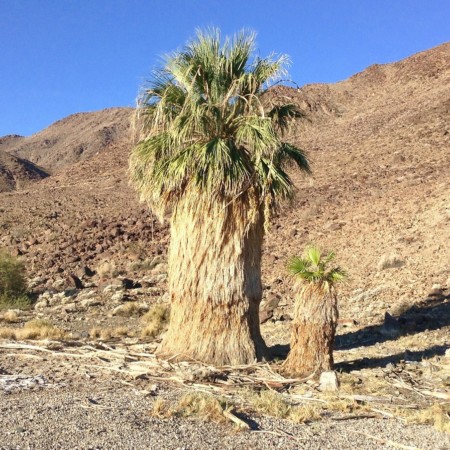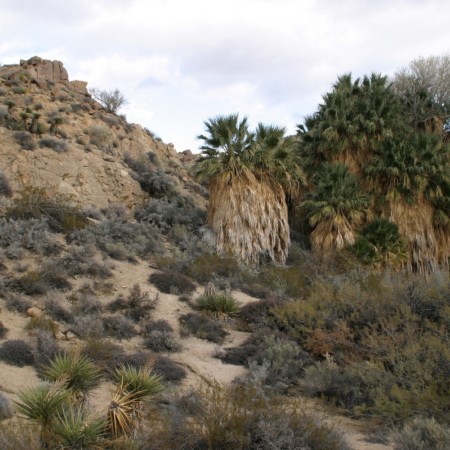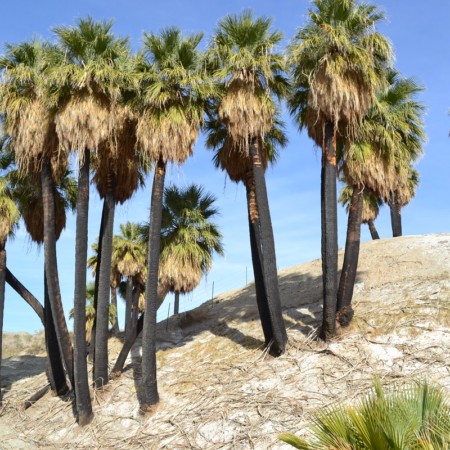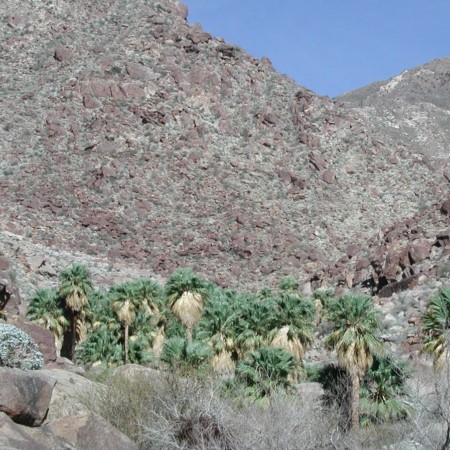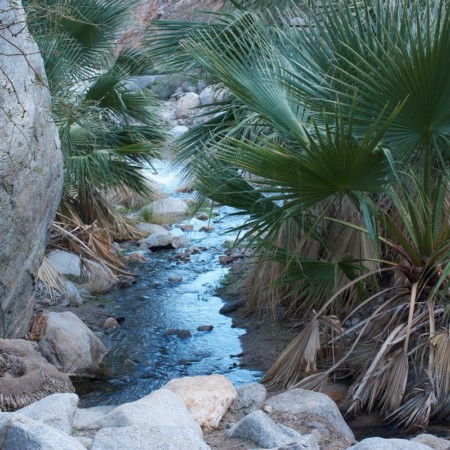(Photograph = Washingtonia filifera leaf, Lance)
Introduction
Washingtonia filifera is the native California palm tree (desert fan palm). It is naturally restricted to desert oases and streams in southern California, Arizona, and northern Baja California. However, as a landscape plant it has been planted by the tens of millions in the permissive climate of coastal southern California and other nearly frost-free locations around the world.
The Details
The desert fan palm is grows naturally in alkaline desert soils, often in oases downslope from hot springs or in canyons along streams. This tree is no succulent and requires access to water. It is not a denizen of the desert at large. The desert fan palm can withstand short periods of 15F to 20F with little or no damage. The tree easily tolerates extreme heat, i.e., 125F if adequately watered. Though accustomed to desert soils, the tree adapts to many garden conditions. It is easy to transplant and is known as a survivor. Small specimens in pots make suitable patio plants.
Growing up to 55-ft tall or more and with a copious sheath of dead leaves, the trees provide hearth and home to many riparian animals including insects, birds, bats and other small mammals. Native Americans ate the fruits raw or ground them into flour for cooking. The leaves were used to make sandals, baskets, and thatched roofs by some Native Americans. It is thought the tree evolved with the advent of desert conditions in southeastern California and northern Baja California. Some botanists have proposed the trees are remnants of a warmer, wetter time in the region.
Additional Reading: Washingtonia filifera Genetic Differentiation
Additional Reading: Washingtonia filifera in Nevada
Additional Reading: Washingtonia filifera in Death Valley
